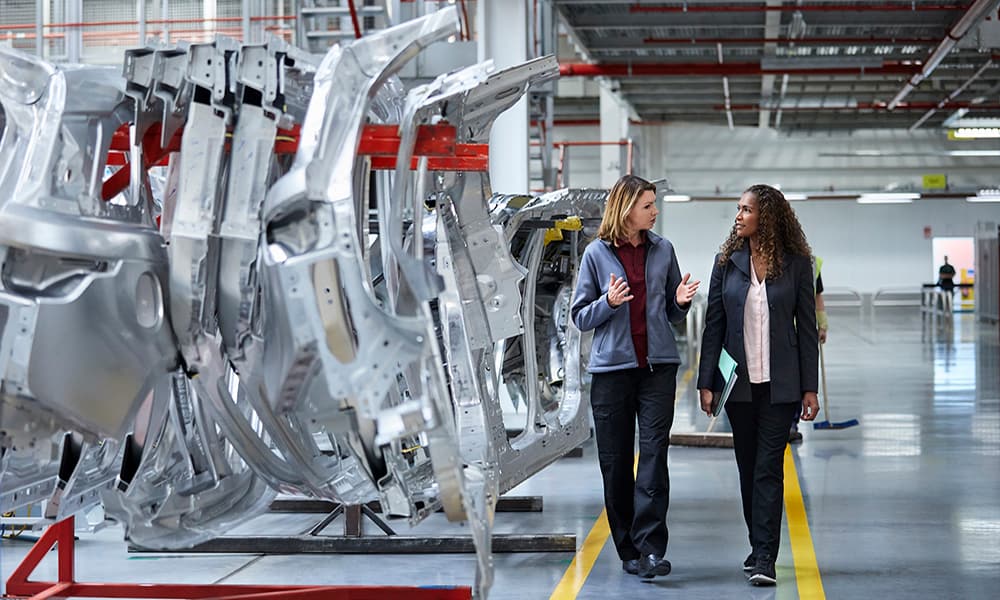We all use technology to make our lives easier. We have software to manage household budgets and smart watches to keep us on schedule. And in the manufacturing world, technology can give real-time visibility into the entire supply chain process and empower collaboration with suppliers.
Yet somehow, nearly two-thirds of manufacturers working in complex, highly-regulated industries such as automotive or aerospace and defense, track their processes using spreadsheets and nonintegrated systems.
This means when an amendment is needed, these manufacturers are faced with the tedium of making manual changes in dozens of places and emailing updates to all suppliers involved. But the challenges don’t stop there. A lost or overlooked email could trigger significant supply chain disruptions, customer fines and product recalls. It’s a system rife with errors, and one that leads to a stressful state of constant fire-fighting.
However, some simple changes in process, powered by technology, can turn good manufacturers into great ones. Here are three steps manufacturers can take to improve collaboration with their suppliers, and ultimately increase efficiencies to eliminate the fire-fighting mentality.
Step 1: Reduce Hidden Risks in Your Supply Chain by Planning for the Unexpected
Heraclitus, a Greek philosopher, has been quoted with saying, “Change is the only constant in life.” This statement rings true for many manufacturers whose supply chain and procurement departments are in a state of constant chaos, putting out one fire after the next, often due to unforeseen changes in everything from product specifications and product defects to changes in a supplier’s business.
For example, let’s say a supplier is suddenly unable to supply an integral car part to the manufacturer due to an equipment failure. The supplier had been sent an email about the shortage days before, but it got stuck in a spam folder.
In order to minimize downtime and avoid shutting down the customer’s assembly plant at the cost of $32,000 per minute, the manufacturer must now spend even more money to fly in the missing part from a different supplier in another country.
Unfortunately, unexpected emergencies like this are common and often lead to mistakes that impact current sales, affect reputations and hinder future business. By implementing an industry-specific direct-spend solution, manufacturers gain full visibility into their supply chain, alerting them to potential risks and helping to avoid costly mistakes.
Step 2: Maximize Efficiency and Profits by Minimizing Manual Processes
While implementing a technology solution to help avoid hidden risks is important, it’s also necessary for manufacturers to look at the rest of their processes to determine other areas that can be automated. Sometimes, if manufacturers have been working manually for a long time, they don’t realize how outdated methods end up costing both valuable time and resources.
Completing tasks manually means there’s a greater likelihood for errors. For instance, it’s easy for important items to be missed or left out when employees are attempting to juggle various, disconnected systems. Plus, generating a comprehensive report from all the data sitting in multiple spreadsheets can be time intensive, if not impossible.
An alternative to slugging through manual data entry is to centralize all supplier data on a single digital platform. And the right digital platform can connect to multiple non-integrated systems, standardizing data so manufacturers’ internal departments can easily collaborate with each other, as well as with suppliers. It also allows manufacturers to easily manage requests and feedback from customers.
Step 3: Invest in Configurable Systems Automation
Another challenge manufacturers face is tracking tens of thousands of items spread across suppliers around the globe. While manufacturing companies must conform to industry standards associated with managing suppliers, the specific data, or importance of the data, can vary greatly, even between companies within the same vertical.
So, when looking to improve supplier collaboration, it’s important for manufacturers to evaluate a comprehensive automated platform that offers templated forms, like an RFQ quote form, to help steamline data capture. Ideally these forms will be editable, allowing individual manufacturers to configure them to meet their specific workflow needs.
From there, notifications and workflow can be sent for everything from a retracted quote to a changed bill of materials – all within one, centralized portal. This prevents any processes from falling through the cracks, and provides a cloud-based single source of truth for manufacturers and suppliers alike.
Improved Collaboration with Suppliers Helps Customers
Ongoing collaboration with suppliers is critical, and to truly thrive, manufacturers must implement better practices that allow them to reduce hidden risks and eliminate manual processes in favor of digital automation.
Cloud-based technology can provide a holistic view into the entire supply chain – a single source of truth – while improving collaboration with suppliers, driving value to both sides and ultimately helping the customers.
It’s difficult to hit a moving target, and in the manufacturing world, change is constant. But, the chaos doesn’t have to be.









